Dennis Genpo Merzel, Roshi
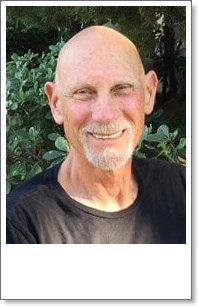
Dennis Paul Merzel, also known as Genpo Roshi, is a Zen teacher and Priest in both the Soto and Rinzai schools of Zen Buddhism, Abbot of Kanzeon Inc. since 1988 and creator of the Big Mind Process in 1999.
From his initial awakening in 1971 his purpose and his passion have remained the same: to assist others to realize their true nature and to continuously deepen his own practice as well as assisting others in carefully reflecting on this life and clarifying the Way.
A champion swimmer and All-American water polo player in his youth, Merzel received a Master’s degree from the University of Southern California in 1968. He left his careers as a school teacher and lifeguard after his awakening and lived alone for a year in a cabin in the mountains near San Luis Obispo.
In 1972 he met his Zen Master, Hakuyu Taizan Maezumi Roshi, and subsequently moved to Los Angeles to study closely with him. He lived there for the next twelve years, ordaining as a Zen Buddhist monk in October of 1973. In September 1980, a year after completing koan study, he became Maezumi Roshi’s second Dharma successor. In April of 1981, he completed the Zuisse Ceremony at Eiheiji and Sojiji Temples in Japan, signifying the recognition of the authenticity of his Dharma transmission by the governing body of Soto Zen Buddhism in Japan, becoming the third Zen Priest outside Japan to be offered the title of Dai Osho (Great Priest) in the Soto Zen Tradition. From 1980 until leaving the Zen Center of Los Angeles in 1984 he was Director under the guidance of Maezumi Roshi.
Genpo Roshi was the first Soto Zen Teacher to Poland (1983), the Netherlands (1983) and Germany (1983) and the second to bring it to France (1983) and Great Britain (1982). He founded the Kanzeon International Sangha in 1982. In October 1988 he was installed as Abbot of Hosshinji, Temple in Bar Harbor, Maine, the third Westerner to be installed as Abbot in the ceremony of Shinsanshiki in the Western world. In 1991 the Kanzeon Board and Roshi closed the Zen Center in Bar Harbor and moved Kanzeon to Oregon, where he continued to teach with a group of his students.
In 1995 he was recognized by the Soto School Headquarters in Japan as a Dendokyoshi, one of the first Senior Western Zen Teachers to be so recognized. He continued to study with Maezumi Roshi until the latter’s death in 1995. He received Inka, final seal of approval as a Zen Master, from Roshi Bernie Glassman in 1996, becoming Glassman’s first Inka successor, the second to receive Inka in the Maezumi Roshi lineage. In the same year, he became the President of the White Plum Asanga, composed of successors of Maezumi Roshi, after Roshi Bernie Glassman stepped down, and served in that position until 2007. In 1993 he moved to Salt Lake City, Utah, and established the Kanzeon Zen Center there as the headquarters of the Kanzeon International Sangha.
In 1999 Genpo Roshi created the Big Mind Process™, also known as Big Mind/Big Heart, which philosopher Ken Wilber has called “arguably the most important and original discovery in the last two centuries of Buddhism.” It has broadened and enriched not only the teaching of Zen but spiritual practices in other traditions as well, enabling thousands of people from all walks of life and religious backgrounds to have an awakening with little or no prior consciousness study. It is being used in many fields, including psychotherapy, law, medicine, education, mediation, business, athletics, social work, family therapy, and work with prison inmates, hospital patients and the dying. Roshi continues to train people to bring the Big Mind process and Big Heart Zen out into the world, and remains deeply committed to their ongoing evolution. He also continues to explore new insights and skillful means to transmit the essence of Zen, which is waking up to our essential nature free from all dogma, suddenly and immediately. He sees zazen, koans and Big Mind as three complementary practices for actualizing the Way, along with other traditional forms of Zen Buddhism such as prayer, chanting, and devotional practices, all beautiful expressions of the teachings for waking up and living with profound wisdom and compassion.
The historical Buddha clearly saw that everything changes and that our ignorance, which is a fundamental cause of our dissatisfaction, suffering and unhappiness, arises from our unwillingness to accept the fact that everything including the self is impermanent. He also foresaw that by about twenty-five hundred years after his passing — the time we are in right now — people would no longer have the capacity to receive his teachings. Many Buddhists naturally resist accepting this change as well.
Facing the contradiction between the inevitability of change and our resistance to it has always been at the heart of Zen practice. So many of our distinctive stories focus on this same point: freeing ourselves from attachment to form, beliefs, concepts and ideas. Bodhidharma’s “vast emptiness, no holiness,” that all is empty of substance and transient in nature and nothing is exempt from this truth; Dogen Zenji’s “dropped off body-mind,” letting go of attachment to body-mind — such teachings aimed at freeing us from the bonds we create for ourselves are the lifeblood of our tradition.
Genpo Roshi continues to explore new insights and skillful means to transmit the essence of Zen, which is waking up to our essential nature free from all dogma, suddenly and immediately. He sees zazen, koans and Big Mind as three complementary practices for actualizing the Way, along with other traditional forms of Zen Buddhism such as prayer, chanting, and devotional practices, all beautiful expressions of the teachings for waking up and living with profound wisdom and compassion.
He serves as President of Big Mind Inc. and as Abbot of Kanzeon Inc., now known as the “Big Mind Big Heart Zen Community”.
For upcoming events please go to the URL below:
Please use this link to open Genpo Roshi’s Big Mind website in a new browser window:
Genpo Roshi’s publications include The Eye Never Sleeps, Beyond Sanity and Madness, 24/7 Dharma, and The Path of The Human Being, a novel entitled The Fool Who Thought He Was God, and many DVDs. His book Big Mind/Big Heart: Finding Your Way, has been published in fourteen other languages: Dutch, Spanish, German, Russian, Polish, French, Italian, Hungarian, Croatian, Romanian, Bulgarian, Danish, Korean and Chinese. His latest book, Spitting Out the Bones, A Zen Master’s 45 Year Journey, was published in 2016.
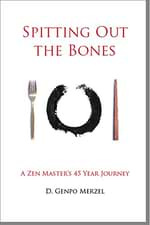
“You have to swallow the whole fish,” Zen Master Taizan Maezumi told his students, “…and then spit out the bones.” First absorb the tradition, endure the hardships of Zen training, then you can spend the rest of your life separating the real treasure from the culture it came in, learning what you can let go of and what is truly yours.
Spitting Out the Bones is Genpo Roshi’s story of his uplifting and exhilarating and humbling journey, including the last five years rising from the ashes of his very public fall from grace, and a candid exploration of the challenge of bringing the essence of the great tradition he inherited to life in the West.

Big Mind – Big Heart | This book presents a highly original and accessible pathway to self-discovery and personal liberation. Since 1999 the Big Mind process has been experienced by many thousands of people in seminars across America. Author Zen Master Dennis Genpo Merzel uses this technique to help people access the ever-present Big Mind/Big Heart awareness – the clear, “just being” awareness and the unconditional compassion that we all can experience.

The Fool Who Thought He Was God | A mysterious package discovered behind a wall in an abandoned building recounts the strange tale of twin brothers reunited after years apart. A school teacher’s quiet life is suddenly upended when he discovers his brother Sebastian, who thinks he is God, has had himself committed to a mental institution in Bangor Maine, close to where he himself has been living for years. He records his visits with his long lost twin and the conversations that leave him increasingly baffled, inspired, and finally uncertain about the thin line between sanity and madness.
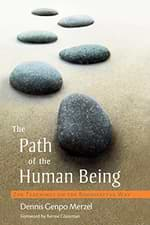
The Path Of The Human Being | Dennis Merzel, one of the most highly regarded American Zen teachers, explains how meditation can gradually lead us to become more and more familiar with our minds, allowing us to better understand ourselves and the nature of human life. He explores the practice of meditation in depth, as well as a range of related topics including: connecting meditation practice to everyday life, understanding central Zen concepts, working with a teacher, and practicing meditation in the midst of difficult times.
“Genpo Roshi invites us in a direct, no-nonsense language to transform ourselves and the world around us. He makes the Zen way clear and accessible to anyone who is willing to engage it. A must for every Zen library.”
—John Daido Loori Roshi, Abbot of the Zen Mountain Monastery
“Genpo Roshi gives those who have never meditated a chance to see their true face and experience the oneness of life.”
—Roshi Bernie Glassman, Zen Peacemakers
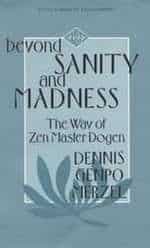
Beyond Sanity and Madness | Zen Master Dogen (1200-1253), the founder of the Soto Zen sect in Japan and one of the most brilliant minds Japan has ever produced, was a true giant of Asian thought whose works are of an astounding richness and profundity. In this book, Genpo Roshi explores the essential features of Dogen’s vision of Zen training and practice as presented in three of his most important works.
“Master Dogen reminds us to appreciate these old teachings from the Bodhisattva’s perspectives and to continually refresh our own integrity as embodied in these great vows of benefiting oneself and others. Genpo Sensei, a follower of Kanzeon, offers his comments for your consideration. It will be most rewarding for him if these comments stimulate your own practice and cause you to confirm your vows. I offer you my sincere encouragement in the genuine practice of the Buddha Way.”
— Hakuyu Taizan Maezumi, Roshi
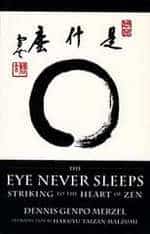
The Eye Never Sleeps | The radical challenge of Zen Buddhism is to drop all assumptions and prejudices and experience the truth directly. American Zen teacher Dennis Genpo Merzel brings new life to this ancient wisdom through his commentaries on a classic Chinese Zen scripture, “Verses on Faith-Mind,” by the Third Patriarch of Zen, Sosan Zenji. The author strikes to the heart of Zen with clarity and force, expressing in modern terms, to an American audience, the essential wisdom and compassion of Sosan Zenji’s famous poem. Full of colorful Zen lore and personal anecdotes from Dennis Genpo Merzel’s life, these talks impart the Buddha’s teaching directly and intimately, illuminating in simple words the timeless questions and problems of day-to-day life.
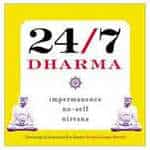
“For the beginner, this introduces the fundamental teachings of Buddhism in language direct, clear, unexotic; drawing straight from the well of our recognizable lives, Genpo’s teachings remind with the pure resonance of the meditation bell: ‘Don’t waste time.’”
— Jane Hirshfield, author of Nine Gates: Entering the Mind of Poetry
24/7 Dharma Zen Master Dennis Genpo Merzel brings clarity and wisdom to our most fundamental questions — Why do we suffer? How can we free ourselves from fear and sorrow? What does it take to live in harmony with others? Merzel’s pithy and provocative observations can be read individually for inspiration and guidance, or from beginning to end as a lucid introduction to Buddhist truths. Supremely accessible, 24/7 Dharma applies the central concepts of Buddhism to our modern-day experience.
“In a long tradition of Zen aphorisms and turning phrases, Roshi Genpo Merzel’s brief, laconic Dharma teachings always point to one’s own true nature.”
— Roshi Bernie Glassman, Zen Peacemakers



